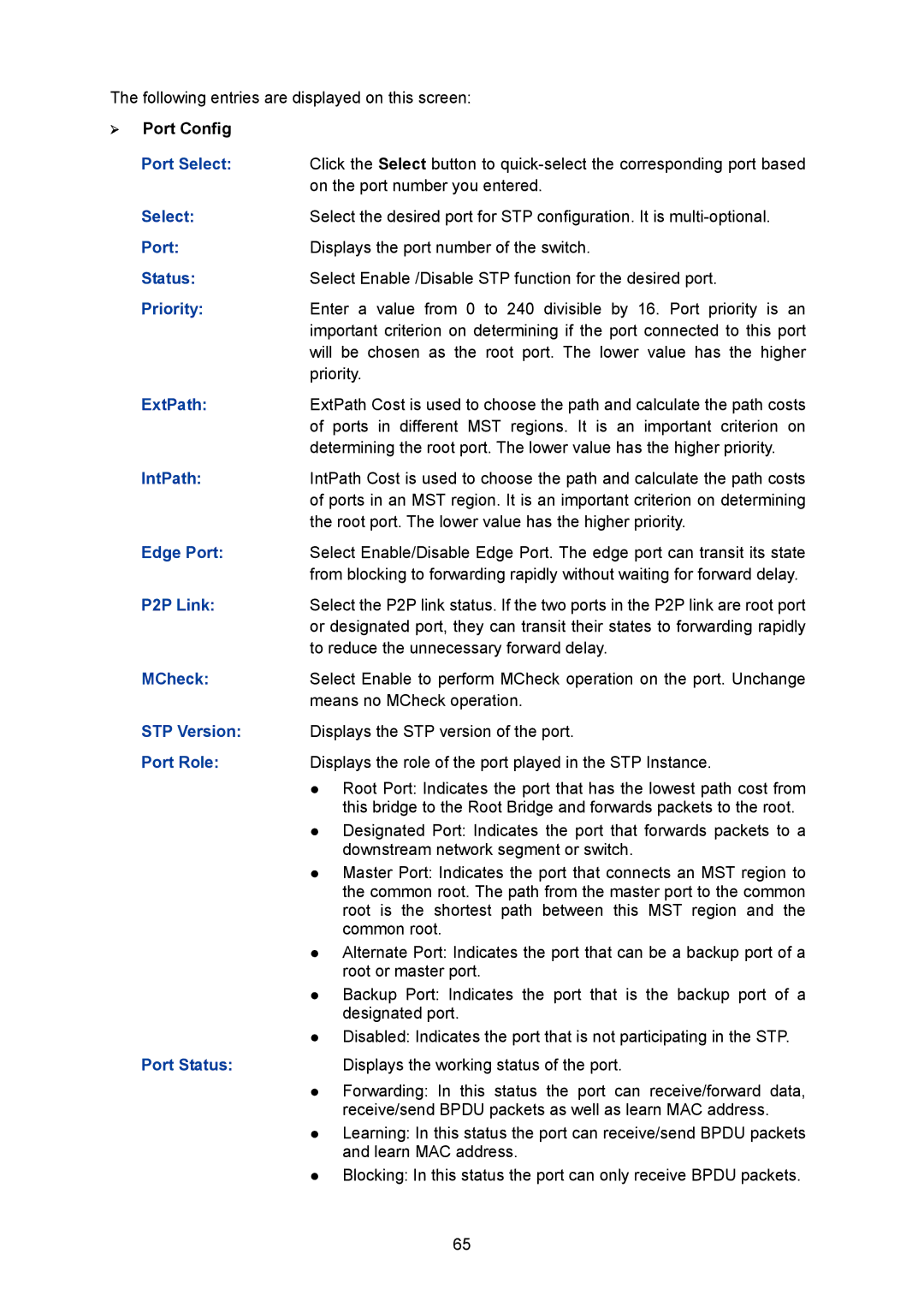The following entries are displayed on this screen:
¾Port Config
Port Select: Click the Select button to
on the port number you entered.
Select: | Select the desired port for STP configuration. It is |
Port: | Displays the port number of the switch. |
Status: | Select Enable /Disable STP function for the desired port. |
Priority: | Enter a value from 0 to 240 divisible by 16. Port priority is an |
| important criterion on determining if the port connected to this port |
| will be chosen as the root port. The lower value has the higher |
| priority. |
ExtPath: | ExtPath Cost is used to choose the path and calculate the path costs |
| of ports in different MST regions. It is an important criterion on |
| determining the root port. The lower value has the higher priority. |
IntPath: | IntPath Cost is used to choose the path and calculate the path costs |
| of ports in an MST region. It is an important criterion on determining |
| the root port. The lower value has the higher priority. |
Edge Port: | Select Enable/Disable Edge Port. The edge port can transit its state |
| from blocking to forwarding rapidly without waiting for forward delay. |
P2P Link: | Select the P2P link status. If the two ports in the P2P link are root port |
| or designated port, they can transit their states to forwarding rapidly |
| to reduce the unnecessary forward delay. |
MCheck: | Select Enable to perform MCheck operation on the port. Unchange |
| means no MCheck operation. |
STP Version: | Displays the STP version of the port. |
Port Role: | Displays the role of the port played in the STP Instance. |
| z Root Port: Indicates the port that has the lowest path cost from |
| this bridge to the Root Bridge and forwards packets to the root. |
| z Designated Port: Indicates the port that forwards packets to a |
| downstream network segment or switch. |
| z Master Port: Indicates the port that connects an MST region to |
| the common root. The path from the master port to the common |
| root is the shortest path between this MST region and the |
| common root. |
| z Alternate Port: Indicates the port that can be a backup port of a |
| root or master port. |
| z Backup Port: Indicates the port that is the backup port of a |
| designated port. |
| z Disabled: Indicates the port that is not participating in the STP. |
Port Status:
z
z
z
Displays the working status of the port.
Forwarding: In this status the port can receive/forward data, receive/send BPDU packets as well as learn MAC address.
Learning: In this status the port can receive/send BPDU packets and learn MAC address.
Blocking: In this status the port can only receive BPDU packets.
65
